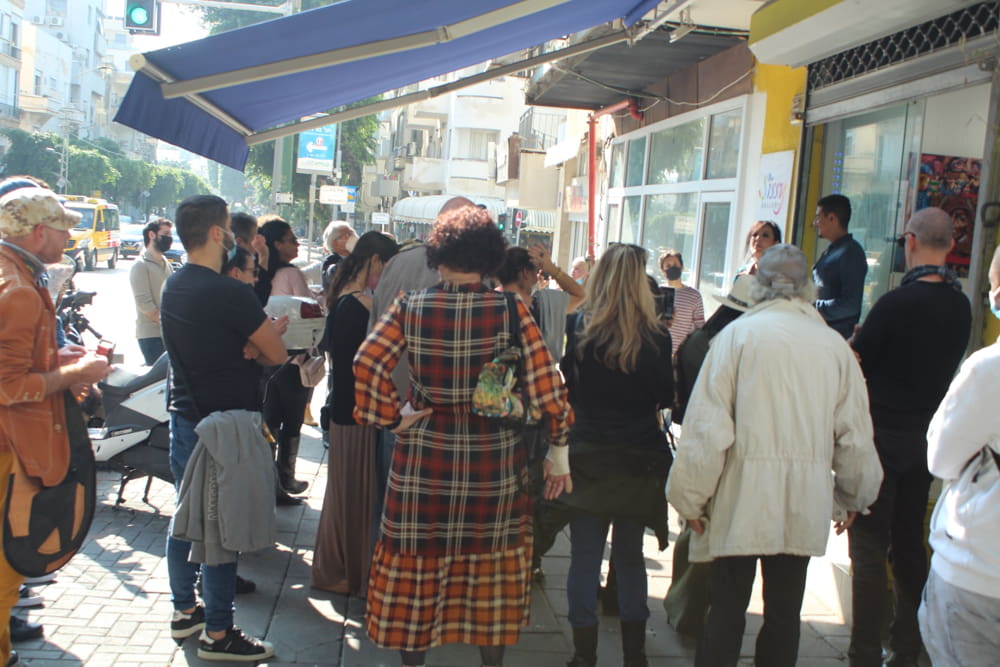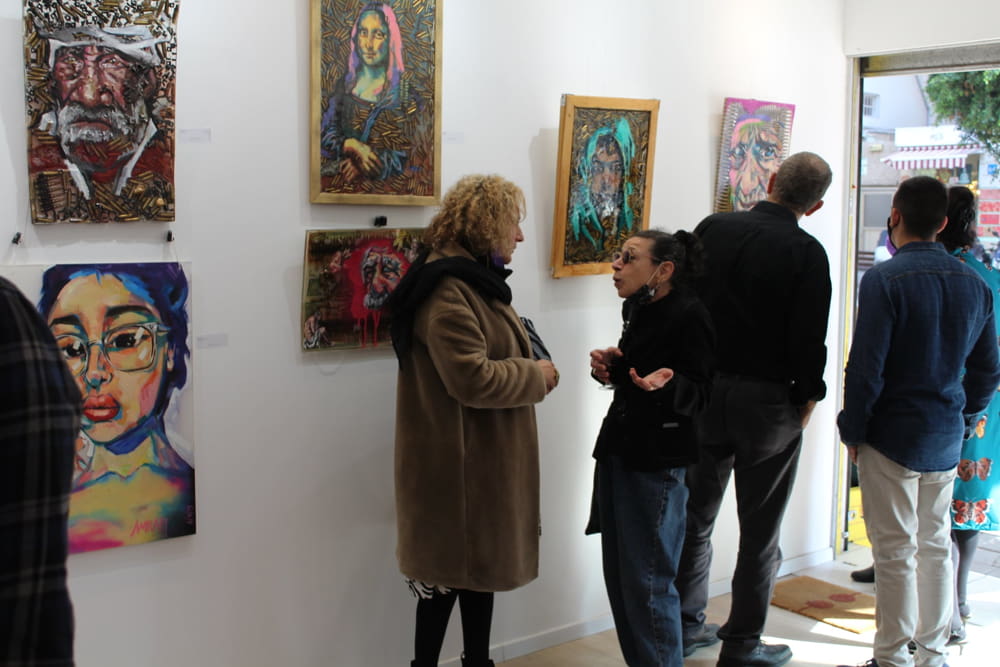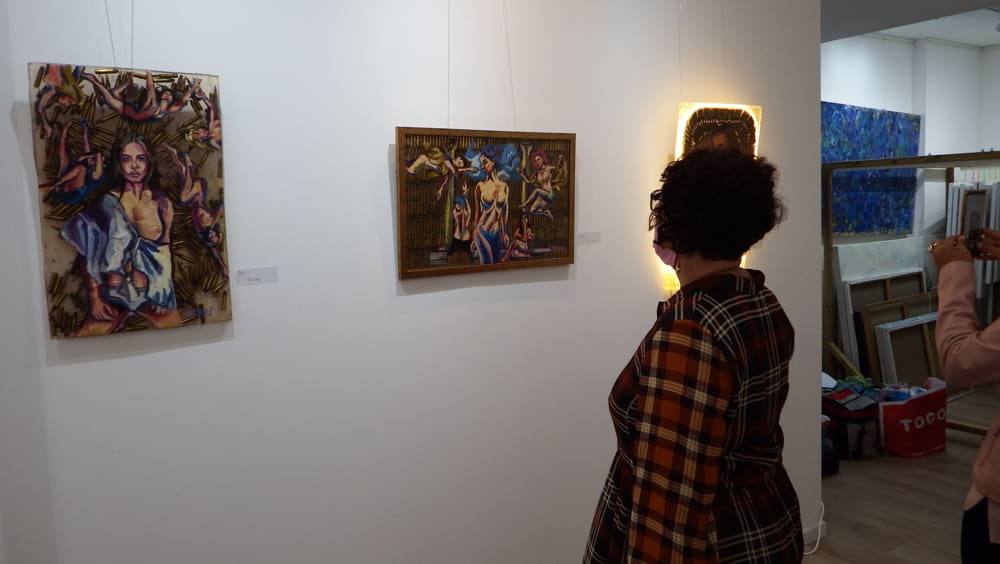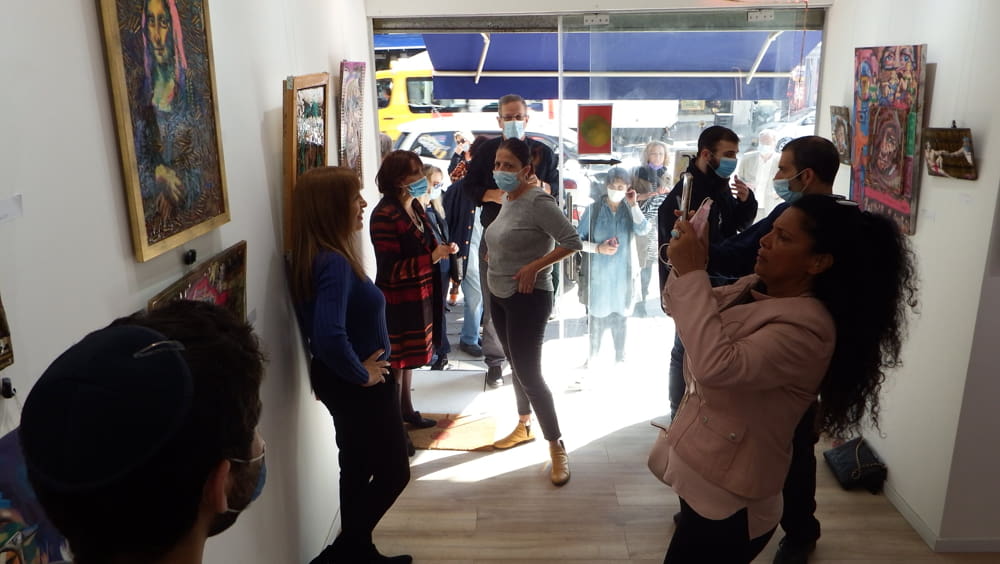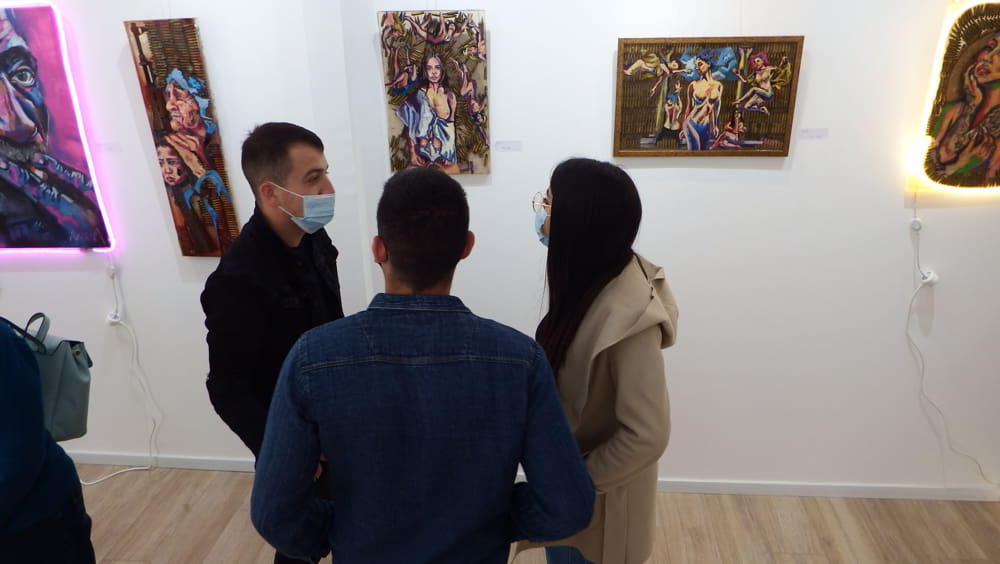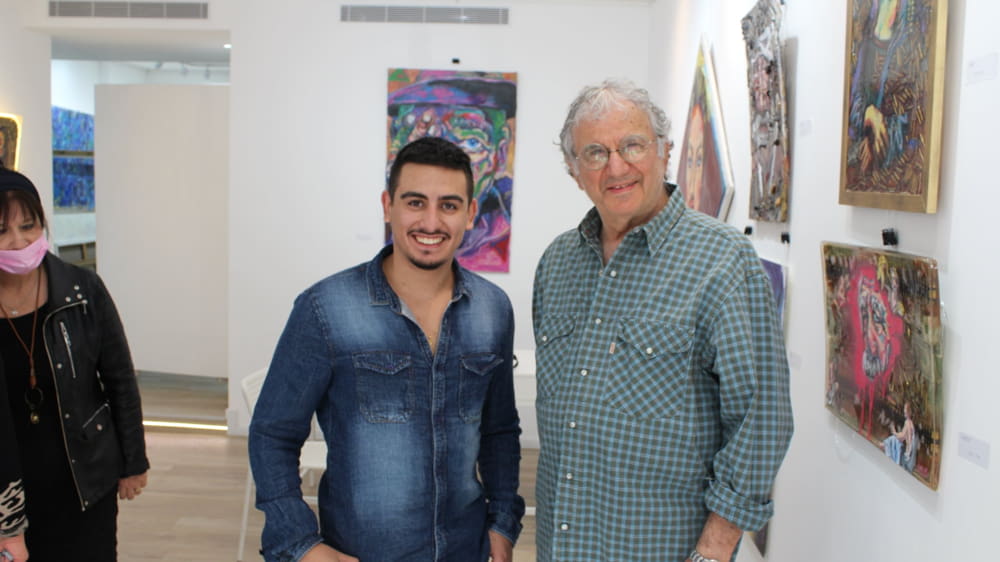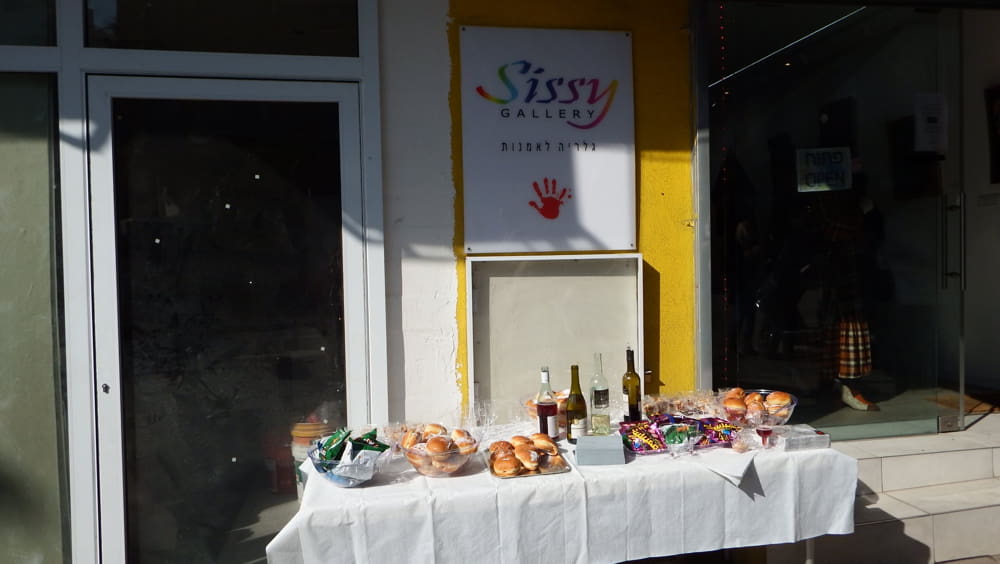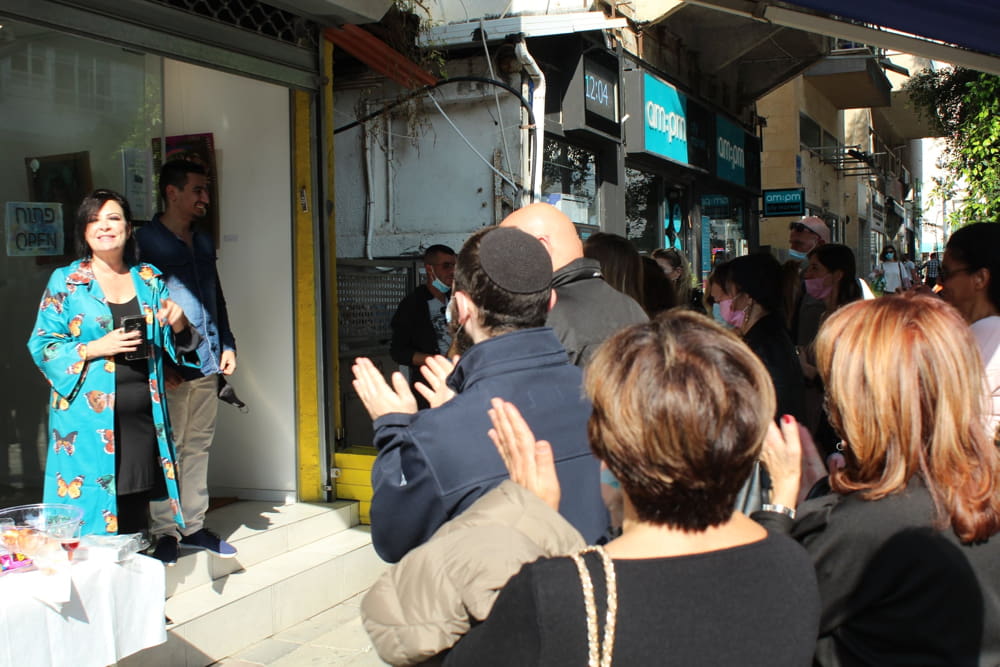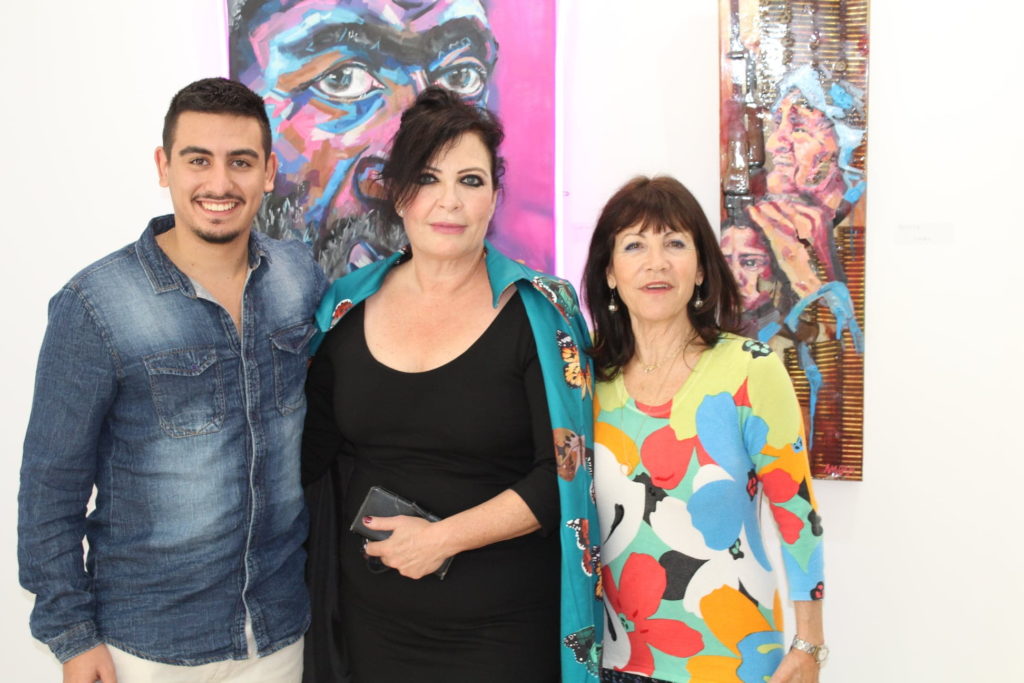21-year-old Ethan Amram is a soldier who creates beautiful and spectacular art with bullet This is the path he went from a religious boy who immigrated from France to a soldier with a solo exhibition
Paper or canvas, the substrate on which many artists paint their works, is almost foreign to the young painter Eitan Amram.
Amram, 21, still a soldier,, creates the platform on which he paints with the help of bullet casings from IDF weapons. He arranges empty M16, M14, Mag or sniper bullet casings (sniper rifle bullets) in a different order from painting to painting, pours epoxy (a kind of liquid glass) over it and he paints, with the bullets forming part of the background of the painting.
” I am with the cadets in the field when they undergo training,” he says. “After every practice, I collect the pods of the bullets that were fired, or empty the bullets. If the pods are empty, they are allowed to be used. I also use smoke grenades. And on one of the platforms I also placed a Kalashnikov rifle that I found abandoned and broken in the field. I fixed it,” explains Amram.
On the projectile platforms, Amram mainly draws human figures, focusing on bright and colorful facial expressions that are a kind of reflection of the soul. He uses a mixture of oil, acrylic and spray paints, which create an interesting texture and are sometimes reminiscent of graffiti paintings.
“When I paint, I ask myself what beauty is and how beauty can be described. I arrange the pods in different shapes and pour the epoxy layer. On each platform there are about 50 pods that are military green in color, and there are some with a red spot for night vision. One of the problems I face is The bubbles that come out of the empty pods, and I have to prevent them from appearing on the platform,” he elaborates regarding the painting process.
What is the idea behind the inclusion of bullets in your art?
“My thinking is based on the verse from the vision of the end of days in the book of Isaiah, ‘And beat their swords into plowshares and their spears into pruning shears; Gentile shall not lift up a sword against Gentile, and they shall not learn war any more’ (2, 4). Bullets and guns are weapons of killing. I wanted to make the tools of His creation into weapons. Inspiration for great artistic power, and the fact that there is something aesthetic about bullets and that cannot be ignored either.
“I think my work style is unique. I don’t know any artists who have incorporated bullets into their works. I feel like someone who breaks the rules of art. My art is mesmerizing and shines like gold, because the pods are made of copper.”
The bullet paintings series includes about 20 paintings, which will be displayed alongside other works by the artist in a new solo exhibition called “POWER” in Tel Aviv. This is Amram’s first exhibition in Tel Aviv, who previously exhibited his works in various settings in Jerusalem, his city. “I am very excited for the exhibition in Tel Aviv, in which I invested time, soul and money,” he shares. “For my honor, I invited various artists such as Aram Gershoni, David Gershtein and Roman Golman, whose works I follow and conduct an art dialogue with some of them on the Internet.”
Eitan Amram, born in Normandy in France, the only son of his two parents and he has two brothers. He immigrated with his family to Israel when he was 9 years old and the family was reunited in Jerusalem with the older sister and her family.
The difficulties of adapting to the culture in the new country, not knowing the language and the feeling of distance led him to look for refuge, which he found in painting. “I studied in religious schools, but I was constantly occupied with questions and doubts about religion and science. I went through a long process with the rabbi at school,” he shares.
Following the rabbi’s recommendation, Amram moved to study at the “Hamad Yehuda” preparatory yeshiva in Beit Shean, where he stayed for eight months. “The yeshiva supported me. The rabbis encouraged me to ask questions and raise doubts, and in the end I realized that religion does not give me answers.”
And the family?
“I respect Shabbat at my parents’ house. I have a studio in the driveway of the house and that’s where I live and create, when I come once every two weeks from the army.”
How does the army treat you being a master soldier?
“On the occasion of the exhibition, I received a special leave, but unfortunately when I enlisted, the army did not recognize me as an ‘active artist’ like Noa Kirel, for example. Fortunately, my officers understand me and help me. At the base, I go out into the field with a pad and paints, and when I close on Saturdays, I make notes, and paint the sketch when Im In the studio at home, basically I have art books of great painters like Renoir and Monet, and I copy their paintings to train my hand.
“That’s how it is with me, when you try to close my mind in a rigid framework, the creation erupts. But as always, when I’m in a place I’m not comfortable in, I develop faster. And that’s how it happens to me in the army as well.”
“POWER” – solo exhibition of artist Eitan Amram
Grand opening: Friday, December 18, 2020 at 11:00 a.m. at Sissy Gallery, 59 Ben Yehuda St. Tel Aviv. The exhibition will close on January 7, 2021.
